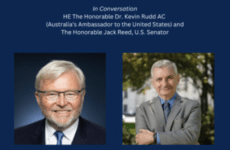By: Molly Osborn
Posted In: News
Matthew Koskinas, the manager of Bellevue Wines and Spirits, in Newport, R.I., remembers the most ridiculous time an underage person tried to buy alcohol in his liquor store. He watched as a young girl paced out front for about 10 minutes, unsuccessful in her attempts to get someone older to buy her some booze. “I’m not 21, and I don’t have an ID but my boyfriend is,” Koskinas says as he rolls his eyes, imitating a young girl’s pleading voice. “I wanted to buy him some beer for his birthday. Is that OK?”
Well, as the law would have it, it isn’t OK. And that is exactly what Koskinas told this young hopeful. “‘Noooo it’s not OK’, I told her. Idiot,” he says. Unlike this girl, most people under the age of 21 trying to buy from a liquor store will present a fake ID.
This time of year, Koskinas says that he only spots a handful of fake IDs per month. During the summer, when tourists crowd the streets, bars and liquor stores, he sees more variety of IDs. “We see lots of out-of-state IDs with the tourists and all,” he says. “I’m looking in the book all the time.”
There are books, like the one Bellevue Wine and Spirits uses, called “United States Driver’s Licenses” that have a picture of every state’s ID. But according to Associated Press reporter Martha Irvine, with the increase of technology, fake IDs are becoming more realistic, and the book may not be enough to identify fakes.
More and more liquor stores nationwide are using scanners to check suspicious IDs. The scanners read the bar codes and electronic strips on most state licenses. Rhode Island’s new drivers’ licenses have such barcodes, but according to Corey Silva, employee of Vicker’s Liquors on Bellevue Avenue, he rarely sees those. “Most people still have the old ones,” says Silva.
Vicker’s Liquors does have a scanning device, and employees use it whenever an ID is in question. “If there’s no barcode, I’ll usually grab a manager,” says Silva. “And if they still question it, they’ll probably call the cops.”
Steve Head is one of those cops who might get the call. Head has been a Newport police officer for nine years and has seen his fair share of fake IDs. He estimates that there are between 50 and 100 arrests per year for possession of a fake ID in Newport.
When Head receives a call related to a fake ID, he says that the suspect has usually fled the scene before he can get there. The bouncer or liquor store clerk will have the ID, but the person has already left in most cases. “The doormen can’t physically hold them there,” says Head. “They’ll just seize the ID.”
Silva has seized IDs at Vicker’s Liquors, but usually the underage person does not stick around. “They don’t get violent or anything,” he says. “They just want to get the hell out of here.”
The scanning device is not foolproof. A real ID will scan no matter whose picture is on it. Some computer-made IDs are easy to spot as fakes, but many underage people are using someone else’s legal ID. Head says, “We grab the computer-made ones left and right.” If it is a real ID, however, they have to determine if the person on the picture is the person presenting the ID.
“I’ll ask for another form of ID and then for their Social Security number,” explains Head. The officers have a computer inside their cruisers that can look up anyone’s Social Security number. “Usually you can’t remember someone else’s Social Security number,” Head says with a chuckle. “I can’t even remember what I had for breakfast.”
Head says that there has been a serious crackdown on busting people for underage drinking and use of fake IDs. With all the bars and liquor stores in Newport the laws are strictly enforced.
Head says that someone with a fake ID is charged with misrepresentation of age. They are summoned to court, their ID is seized and they have to pay a fine of $200 to $300.
Not every state’s licenses have barcodes. Alaska, Wyoming, Oklahoma, and New Jersey’s licenses do not scan. In a tourist town like Newport, alcohol servers have to be familiar with IDs from every state. Koskinas, along with other employees from Bellevue Wine and Spirits, attended a training program called “Server Training on Premise,” or STOP, taught by Frank Faubert. The program teaches all who serve alcohol the tricks of the trade.
The Alcohol Epidemiology Program, a research program within the School of Public Health at the University of Minnesota, conducts research on preventing alcohol-related problems. The AEP website gives tips to bouncers and liquor store employees to keep in mind when checking IDs.
They recommend that anyone serving alcohol:
-Follow the same procedure when checking each ID; don’t be distracted by conversation with the customer
-Check the ID of anyone who looks under the age of 30
-Check the ID photo and the recorded height for resemblance with the attempted buyer. Compare the hairline, eyebrows and chin shape on the photo














